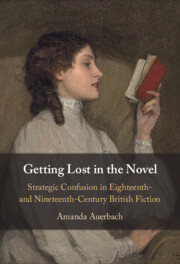Refine search
Actions for selected content:
4 results
Introduction
-
- Book:
- Getting Lost in the Novel
- Published online:
- 26 July 2025
- Print publication:
- 07 August 2025, pp 1-24
-
- Chapter
- Export citation

Getting Lost in the Novel
- Strategic Confusion in Eighteenth- and Nineteenth-Century British Fiction
-
- Published online:
- 26 July 2025
- Print publication:
- 07 August 2025
Introduction
-
- Book:
- The Late Modernist Novel
- Published online:
- 02 June 2022
- Print publication:
- 09 June 2022, pp 1-29
-
- Chapter
- Export citation
Introduction - Natural History, the Theology of Nature, and the Novel
-
- Book:
- The Divine in the Commonplace
- Published online:
- 06 July 2019
- Print publication:
- 18 July 2019, pp 1-46
-
- Chapter
- Export citation
